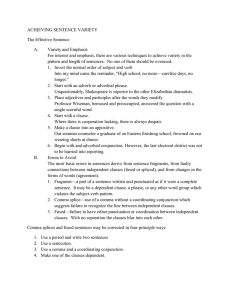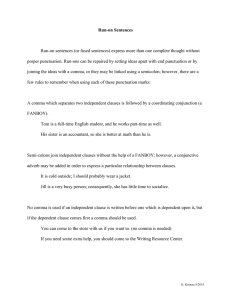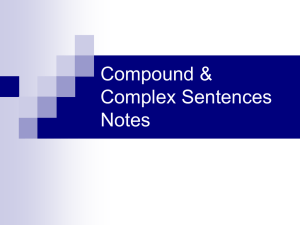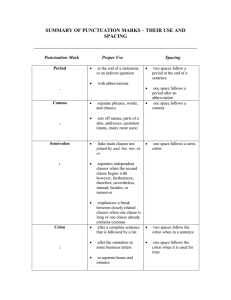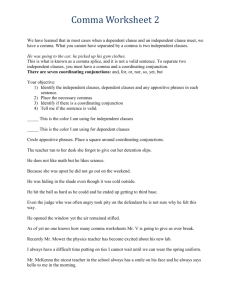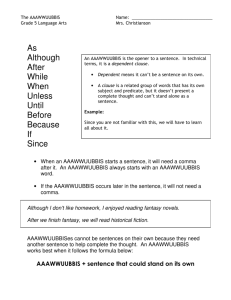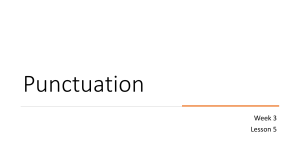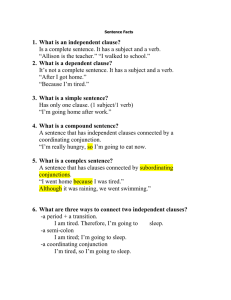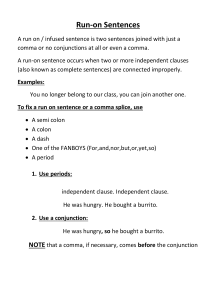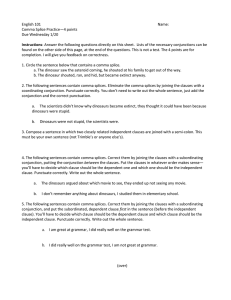Comma Rules Use a comma…
advertisement
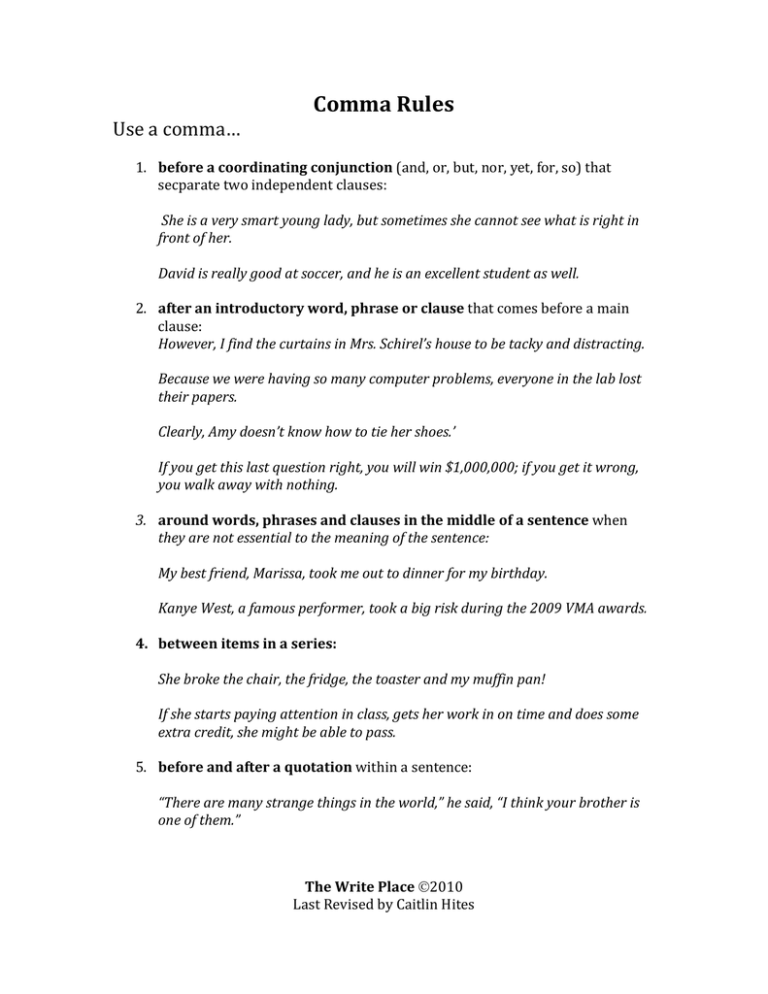
Comma Rules Use a comma… 1. before a coordinating conjunction (and, or, but, nor, yet, for, so) that secparate two independent clauses: She is a very smart young lady, but sometimes she cannot see what is right in front of her. David is really good at soccer, and he is an excellent student as well. 2. after an introductory word, phrase or clause that comes before a main clause: However, I find the curtains in Mrs. Schirel’s house to be tacky and distracting. Because we were having so many computer problems, everyone in the lab lost their papers. Clearly, Amy doesn’t know how to tie her shoes.’ If you get this last question right, you will win $1,000,000; if you get it wrong, you walk away with nothing. 3. around words, phrases and clauses in the middle of a sentence when they are not essential to the meaning of the sentence: My best friend, Marissa, took me out to dinner for my birthday. Kanye West, a famous performer, took a big risk during the 2009 VMA awards. 4. between items in a series: She broke the chair, the fridge, the toaster and my muffin pan! If she starts paying attention in class, gets her work in on time and does some extra credit, she might be able to pass. 5. before and after a quotation within a sentence: “There are many strange things in the world,” he said, “I think your brother is one of them.” The Write Place 2010 Last Revised by Caitlin Hites She stood on top of the table and yelled, “We’re not gonna take it!” 6. before an afterthought: She was awesome, especially when she made jokes. 7. to set off geographical names, items in date and professional titles: He was from Atlanta, Georgia. My dog died on March 14th, 1990, when he fell into the river.’ I will never forget my old address, 354, 6th Ave South, St. Joseph, New Mexico. The Write Place 2010 Last Revised by Caitlin Hites

